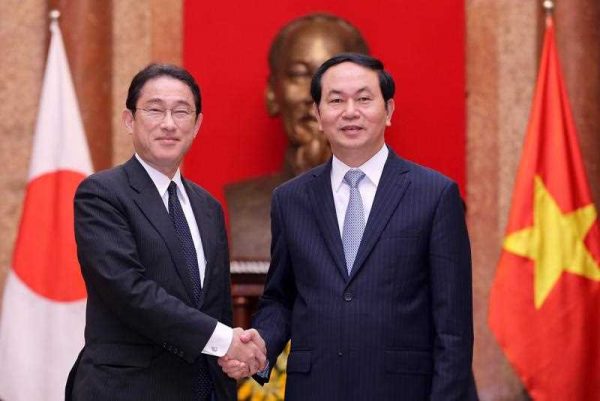The basis for the extensive and growing security cooperation between Vietnam and Japan is a shared concern over Chinese territorial ambitions. China’s assertion of its territorial claims in the South China Sea has prompted Vietnam to adopt a strategy of soft balancing against China. This strategy is based on two components: a three-nos policy — no foreign base, no military alliance, no siding with one country against another — to assuage China’s fear of encirclement, and what Hanoi calls the ‘diversification and multilateralisation of its foreign relations’ to balance against Chinese pressure.
Even before the emergence of the current South China Sea disputes, Vietnam considered Japan to be one of its best and most powerful friends in Asia. As a close ally of the United States, Japan has been Vietnam’s most important link to the West. Japanese policy has been much more supportive of Vietnam than that of the United States. Japan immediately normalised relations with Vietnam after the conclusion of the Paris Peace Agreement in 1973, (while it took the United States another 22 years to do so). Japan was also the first country in the Western camp to resume aid to Vietnam in 1992, a major step in ending Vietnam’s diplomatic and economic isolation as a result of its invasion of Cambodia.
Japan signed a trade agreement and exchanged most favoured nation status with Vietnam in 1991, seven years before the US Congress did the same. In 2011 Japan officially designated Vietnam a market-based economy, a status Vietnam has not yet received from the United States. As a result, Japan is Vietnam’s largest donor in terms of official development assistance, the second largest investor in Vietnam after South Korea, and the third largest export market for Vietnam after China and the United States.
In the sensitive area of defence cooperation, Japan agreed to form a strategic partnership with Vietnam as early as 2006, making it the second country to do so after Russia, a traditional ally of Vietnam. This partnership was elevated to ‘intensive strategic partnership’ in March 2014.
Of the major powers that could serve as a counterweight to China, Russia has sided with China in opposing the internationalisation of the South China Sea dispute. Human rights issues and latent Vietnamese suspicion of American intentions and commitments have prevented relations with the United States from developing to their full potential.
That leaves Japan as an attractive alternative that can, along with the United States, act as a counterweight to China. Japan is an Asian country, so Vietnam does not have to worry about it withdrawing from the region. Because of Japan’s own maritime disputes with China in the East China Sea, and the importance of the South China Sea to Japanese commerce and security, Japan has an important stake in preventing China from controlling the South China Sea. Japan has taken steps to increase its role in safeguarding freedom of navigation, sustaining US involvement in Asia and providing defence assistance to the Philippines and Vietnam.
China’s placing of an oil rig in Vietnam’s claimed exclusive economic zone in May 2014 as well as its subsequent efforts to build and militarise artificial islands in disputed waters created a slight pivot in Vietnam policy toward the West. Seeking counterweights took precedence over the fear of antagonising China. It was in this context that defence cooperation between Vietnam and Japan accelerated.
One month after the oil rig incident, in June 2014, the Japanese landing ship Kunisaki docked at Tien Sa port as part of a US Navy-supported Pacific Partnership. Two months later, in August, Japan announced it would provide Vietnam with six vessels to boost its capacity for maritime security. In May 2016 Japan pledged to provide two more. The two sides have also agreed to hold joint naval exercises.
The most concrete sign of the new defence partnership has been Japan’s increased use of Vietnam’s strategic Cam Ranh Bay naval base. The two countries agreed to allow Japanese warships to dock at Cam Ranh for refuel and supplies. Two Japanese P-3C Orion surveillance planes and two Japanese guided-missile destroyers have transited there so far this year.
The presence of the Japan Self-Defense Forces at Cam Ranh Bay signals Japan’s clear commitment to Vietnam in the South China Sea dispute and heralds a new chapter in bilateral defence cooperation. More broadly, the deepening defence cooperation between Vietnam and Japan is illustrative of how China’s actions in the South China Sea are prompting Southeast Asian states to seek out friendships with new regional partners.
Nguyen Manh Hung is Professor Emeritus of Government and International Relations at George Mason University and non-resident senior associate at the Center for Strategic and International Studies, Washington D.C.

